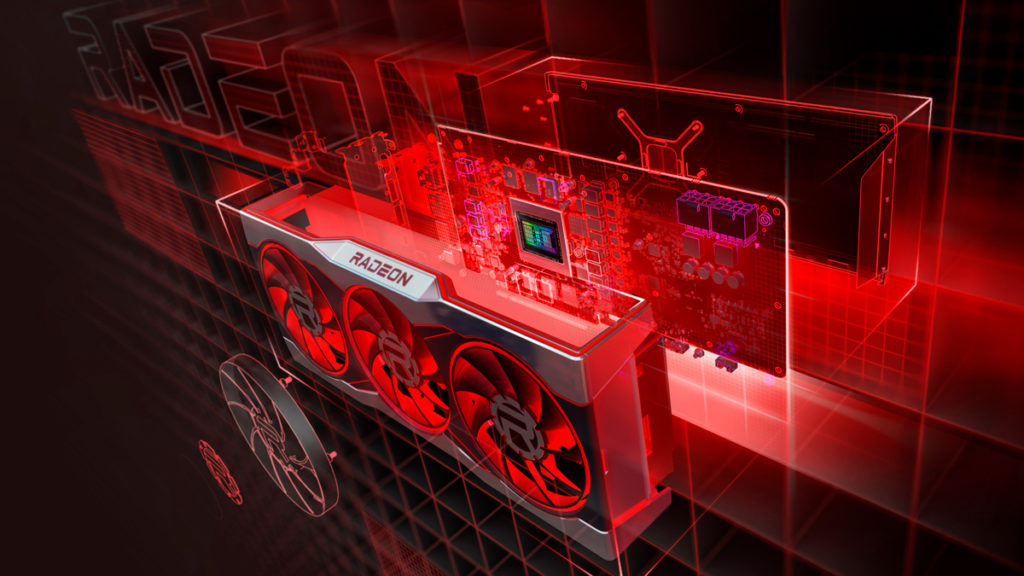
AMD’s flagship Radeon RX 7000 Series graphics cards could see a big bump in Infinity Cache.
As spotted by Kepler_L2 and other insiders, AMD had accidentally shared some details as part of a recent commit to its AMDGPU Linux drivers that seem to confirm the flagship RDNA 3 GPU, Navi 31, will feature a single graphics complex die (GCD) but six multi-cache dies (MCD). A further breakdown from Kepler initially alludes to a Radeon RX 7000 Series flagship with a 384-bit memory bus and 192 MB of Infinity Cache, but when 3D V-Cache is entered into the equation, the amount of Infinity Cache could go up to 384 MB.
32MB + 64-bit MC normally, +32MB 3D V-Cache on some models.
— Kepler (@Kepler_L2) July 13, 2022
The Radeon RX 6950 XT, AMD’s current flagship graphics card for gamers, features 128 MB of Infinity Cache in comparison. The technology is described by AMD as a key ingredient toward RDNA 2’s power efficient performance.
AMD RDNA 2 Architecture is even more efficient than before with the introduction of AMD Infinity Cache, an all-new cache level that enables high bandwidth performance at low power and low latency. This global cache is seen by the entire graphics core, capturing temporal re-use and enabling data to be accessed instantaneously. Leveraging the best high frequency approaches from “Zen” architecture, AMD Infinity Cache enables scalable performance for the future.
Analysis from VideoCardz has teased how much of a massive uplift in memory bandwidth AMD users might expect from the next flagship versus its current champion.
With 384-bit memory bus and GDDR6 memory running only at 18 Gbps, the bandwidth for flagship Radeon RX 7900 series could reach as high as 864 GB/s, 50% higher than RX 6950XT. This value does not include the Infinity Cache’s bandwidth. Furthermore, Infinity Cache size of 192MB would be 50% larger than Navi 21.
AMD is expected to launch its first Radeon RX 7000 Series graphics cards later this year. The flagship is rumored to feature 12,288 Stream Processors, 24 GB of GDDR6 memory, and clocks as high as 3.0 GHz.
Source: Freedesktop (via Kepler_L2, VideoCardz)
